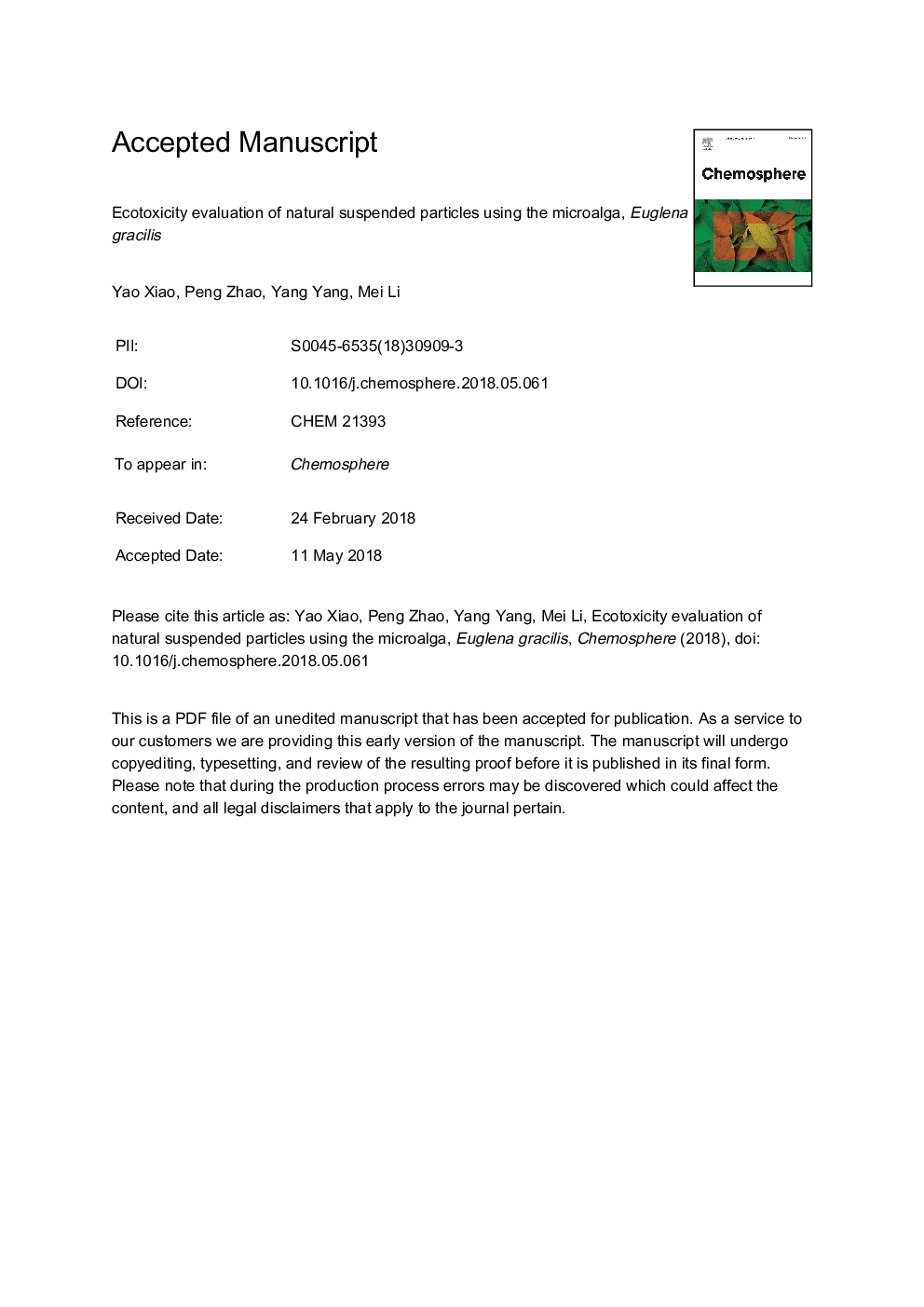| Article ID | Journal | Published Year | Pages | File Type |
|---|---|---|---|---|
| 8850932 | Chemosphere | 2018 | 28 Pages |
Abstract
As vectors for pollutants, suspended particles (SPs) have been studied for many years. However, limited studies have focused on the ecotoxicity of natural SPs. This study examined ecotoxicity of natural SPs isolated from Gonghu Bay and its Ecological Restoration Area (ERA) water samples by Tangential Flow Filtration (TFF) using the microalga Euglena gracilis as a model organism. Effects of SPs on algae growth, photosynthesis pigment contents, superoxide dismutase (SOD) activity and DNA damage were characterized to determine the effects of ecological restoration. Additionally, SPs were separated into nanoscale (<1â¯Î¼m diameter) and common-scale (â¥1â¯Î¼m diameter) groups by size, to compare the differences in toxicity of SPs with different sizes. We found, in naturally occurring concentrations in Gonghu Bay, nanoscale SPs were more toxic than common-scale ones. However, no significant adverse effects were detected in the nanoscale SPs from the ERA, which demonstrated that ecological restoration might reduce the toxicity of nanoscale SPs. The results were supported by the inhibition of growth, SOD activities and DNA damage, while no adverse influences were detected on pigment contents of E. gracilis in all the treated groups. Our study provides new insights into the toxic effects of SPs.
Related Topics
Life Sciences
Environmental Science
Environmental Chemistry
Authors
Yao Xiao, Peng Zhao, Yang Yang, Mei Li,
